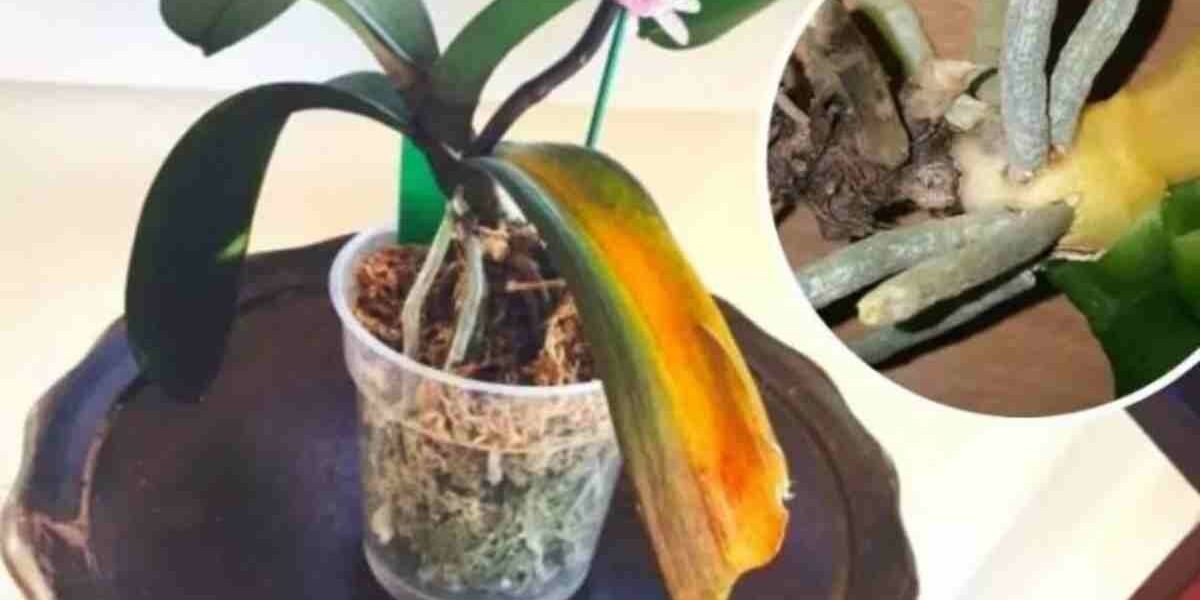A gardener revealed to me a way to save an endangered orchid . This method brings any plant back to life!
If the orchid leaves are wilting and softening, the problem is probably root rot. How to revive a rotten orchid? It is possible if you take good care of it.
Why are my orchids dying?
Root rot is usually caused by poor soil drainage or overwatering, although old or compacted soil can also be the culprit. If you are just starting to notice wilting and yellowing leaves, you can save the orchid by simply moving it to another container. However, if the roots are severely rotted , the affected areas should be cut off and the potting mix changed to give the orchid the best chance of recovery.
How to revive a rotten orchid?
If the container does not have enough drainage, move the orchid to another container. If this flower is kept in a container without drainage holes, the roots may start to rot due to excess water. To solve this problem, move the orchid to a container with holes. Avoid planting it before the flowers have fallen off. If you suspect root rot, replant immediately to keep the plant alive.
Orchids are sometimes planted in a thin plastic container with drainage holes, and then the container is placed in a decorative pot without drainage . In this case, you can remove the plastic container and leave the orchid in it until planting.
If your orchid is already planted in a pot with good drainage, but the roots are still rotting, you may have overwatered it. If that’s not the reason, the platform may be too old. If this happens, move the plant to a new pot with new soil.
Which pot to choose?
Choose a clay pot that is about the same size as the old container. Orchids do best when planted in a pot that is not too large. Also, the more soil you use, the more water the plant will retain, which increases the risk of root rot. By choosing a smaller container, you can keep as much soil available as possible so as not to shock the plant too much. Ceramic pots are good for orchids because they are porous. This allows the soil to dry out more quickly, which helps prevent root rot. If you are reusing the dish, soak it in a solution of 1 part bleach to 9 parts water for about 2 hours. This will kill any bacteria or fungus that could harm your plants. Before using the container, let it dry out for about 2 days to completely remove the chlorine.
Orchid transplant
Carefully remove the entire plant from the pot. Turn it on its side and grab the plant at the base of the stem. Then gently pull the plant out. Don’t damage the roots any more than they already are, so don’t pull hard or try to force the orchid out of the pot. If the plant doesn’t come out of the container easily, try submerging the entire container in water for about 5 minutes to soften the roots. If the orchid is still difficult to remove, you may need to break the pot.
Carefully transfer the orchid to the new pot. Gently press the roots into the new container and add as much soil as possible. Do not compact the soil hard – orchid roots need air to dry out. However, if the plant in the new pot is too weak, soil can be added to the edges of the pot.
If the new pot is deeper than the old one, add special orchid soil to the bottom of the pot before planting the plant.
Orchid Care
Wait a few days before watering the flower. Do not water the orchid too much at once . Give the plant 2-3 days to get used to the new environment and water only when the top layer of the soil is dry. It is possible that after planting an orchid, its flowers will fade. If this happens, it does not mean that something is wrong, it is most likely just transplant shock. Orchids grow best if their growing medium is changed every two years.
Cinnamon also helps the plant to grow . It is perfect for treating rotten orchids. Prepare a solution of 2 teaspoons of cinnamon and 1 liter of boiled water and mix. Let it cool completely and wash off any dirt. Pour the mixture into a plastic bottle and use it to fertilize the flowers. You can see how much this mixture affects their growth. But do not use it constantly as it can dry out the orchid too much.

